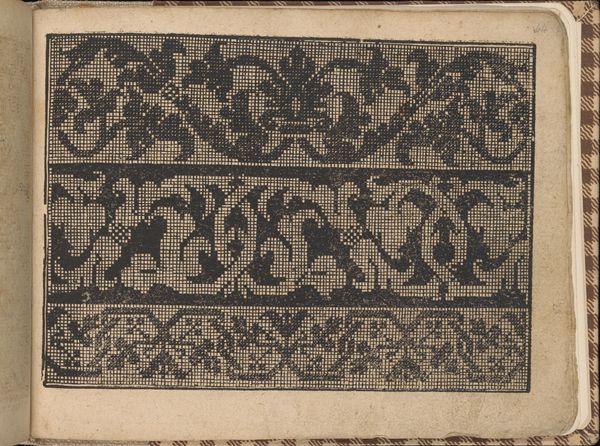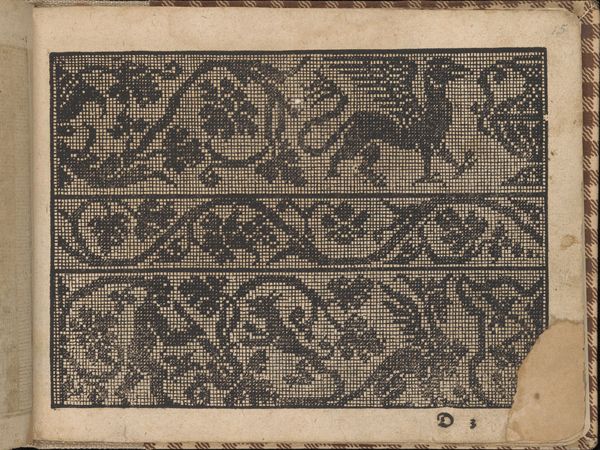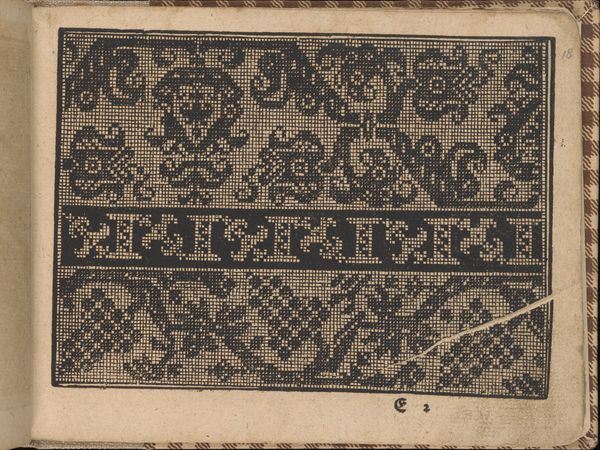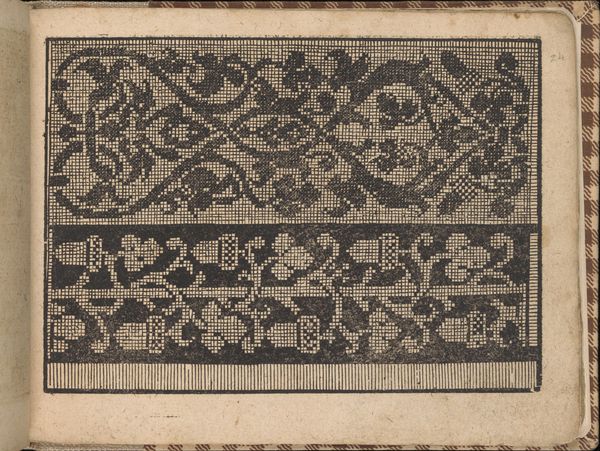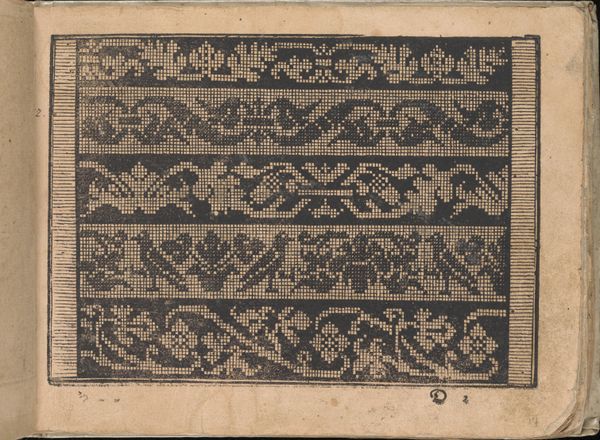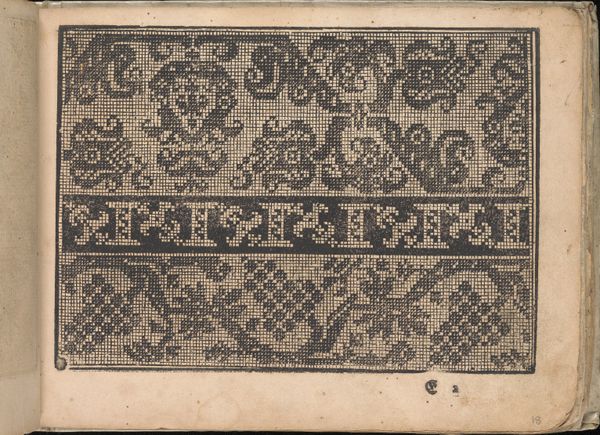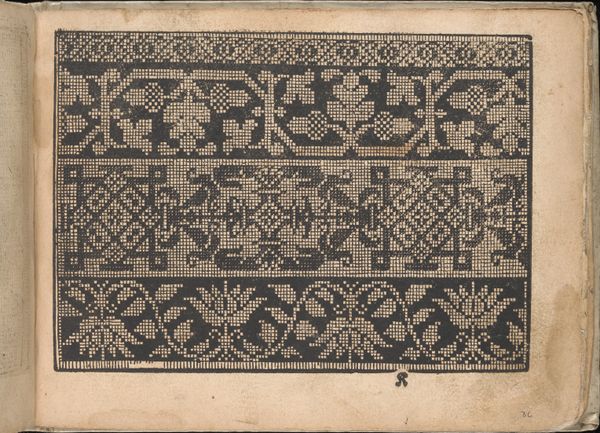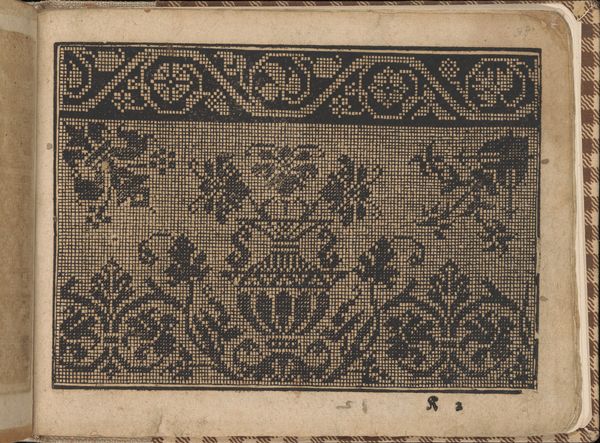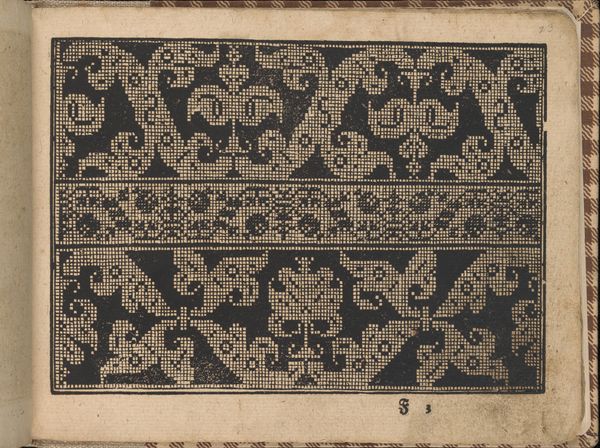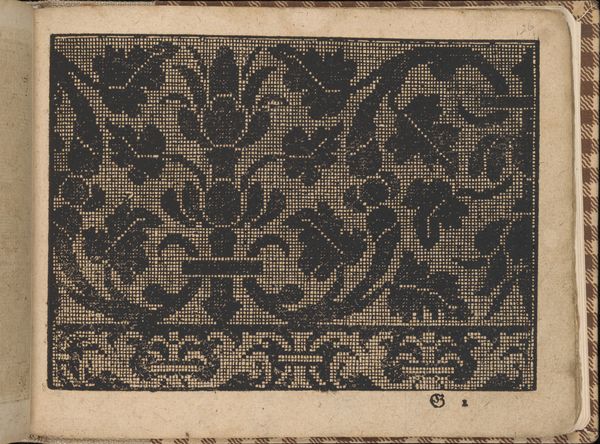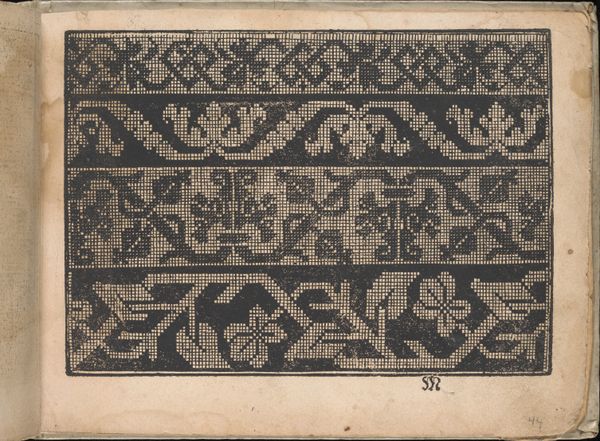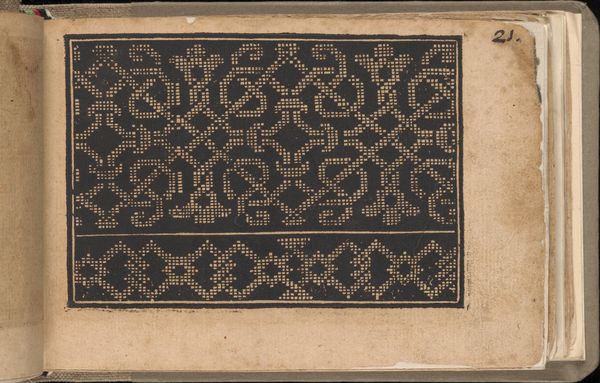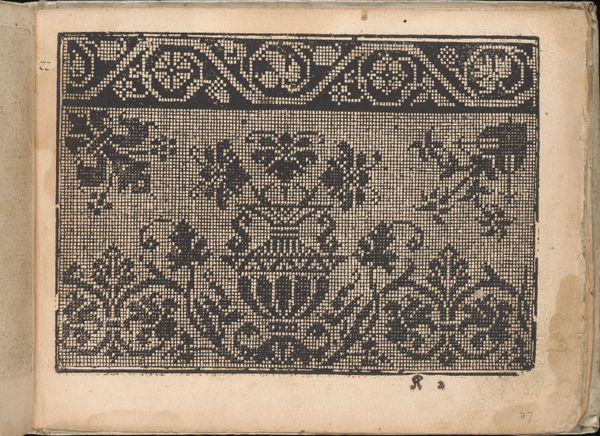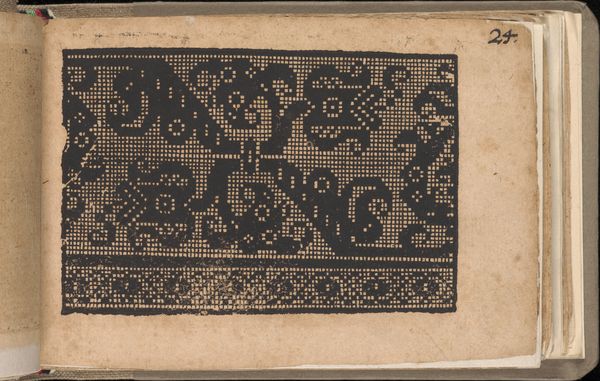
drawing, ornament, print, linocut, paper, ink, woodcut
#
drawing
#
ornament
#
toned paper
#
ink paper printed
# print
#
linocut
#
book
#
paper
#
ink
#
tile art
#
linocut print
#
geometric
#
woodcut
#
men
#
pen work
Dimensions: Overall: 6 1/8 x 7 7/8 in. (15.5 x 20 cm)
Copyright: Public Domain
Curator: I’m struck immediately by the intensity and starkness of the black ink against the aged paper, like visual echoes from another era. It feels almost like a secret code waiting to be deciphered. Editor: Indeed. We're looking at a page from Bernhard Jobin’s “Neu Künstlich Modelbuch,” specifically page 43r, created in 1598. It is part of a larger book printed with woodcut and linocut techniques and currently held at The Met. This page showcases repeating patterns designed for artisans and needle workers, each line separated by thin black rules, demonstrating a highly refined and practical artistry of its time. Curator: I see familiar medieval sensibilities echoed here, as well as cultural expressions related to that time. Do the various motifs also suggest societal hierarchies, or perhaps reveal specific group symbols in late 16th century Europe? I can definitely see traces of Northern Renaissance artistic lineage as well. Editor: Absolutely, the patterns likely functioned both aesthetically and socially, influencing fashion and social signalling. These weren’t merely decorations. Ornamentation held powerful significance, from asserting status to aligning oneself with specific social groups, much like visual codes we see used in contemporary streetwear or tattoo culture. The repeating patterns speak volumes of the time's deeply interwoven artistic, social, and economic fabrics, including complex socio-political messages. Curator: You've nailed how the motifs speak about collective aspirations and tastes during a particular period in time. Looking closely, there are small stylized human figures that appear in the book that represent labor; an intentional decision perhaps? A celebration of working individuals? Editor: The inclusion of human figures could very well be an active demonstration. The placement itself might encourage recognition of individual laborers’ presence. By immortalizing their figures within this influential format, we see potential affirmations of societal roles. This highlights, too, that the artwork isn't just ornamental; it acts as a subtle social documentation. Curator: Exactly, by decoding such details we reveal what society valued back then! For me, it underscores the potency of symbols in connecting with culture from long ago. Editor: I agree! Examining this intricate piece makes me recognize how historical visual designs impact even contemporary movements. Considering our analysis, the patterns continue impacting contemporary social dynamics that surround individual agency, communal existence and visual cultures even today.
Comments
No comments
Be the first to comment and join the conversation on the ultimate creative platform.
